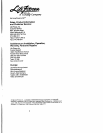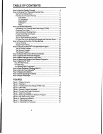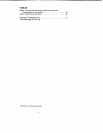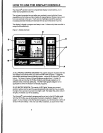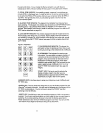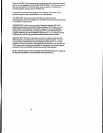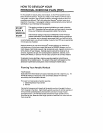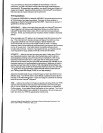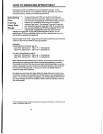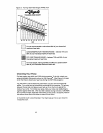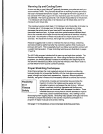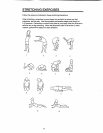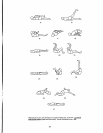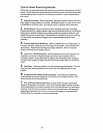
Ifyou are working to reduce the probability of heart disease or improve
endurance, you goal is to build a stronger heart and lungs (cardiorespiratory
improvement). By expanding lung capacity, your body's intake and utilization of
oxygen is increased. Regular aerobic exercise on the Lifecycle~ accomplishes
this and improves muscle endurance at the same time.
FIT Guidelines
FIT stands for FREQUENCY of exercise, INTENSITY of exercise and the amount
of TIME (duration) you spend exercising. These are the three variables in
designing an effective Personal Exercise Plan (PEP). Here's how to use the FIT
guidelines to develop your PEP:
FREQUENCY. . . refers to how many times you ride your Lifecycle@ each week.
Ifyour o~ective is to improve cardiorespiratory fitness, you should ride the
Lifecycle at least three times a week, with no more than two days between
workouts. At first, you should give your muscles a chance to adapt to increased
activity.
When you begin your FIT regimen, do not exercise more than once every other
day. This should prevent muscle soreness and fatigue. Even after you have
progressed sufficiently, the American College of Sports Medicine still
recommends that you workout not exceed 5 times per week. Increased
frequency yields minimal additional cardiorespiratory improvement and increases
the risk of muscle strain. Only highly trained, competitive athletes should
consider daily workouts. However, if your goal is fat loss, you should exercise
more frequently for longer periods of time at a lower level of intensity.
INTENSITY. . . refers to how hard you work your heart. A heart rate of 75% of
your theoretical maximum heart rate is the threshold above which optimum
cardiorespiratory training occurs for those who are medically fit 90% of your
theoretical maximum heart rate is a safe upper limitfor these same people.
*
Select a level of intensity that puts your heart rate between 75°k and 90% of your
theoretical maximum for cardiorespiratory improvement Beginners wnt want to
exercise at a heart rate which is closer to 75% while highly trained athletes may
want to exercise closer to 90% of the theoretical maximum heart rate. (See Table
1 on page 44 for an approximation of the theoretical maximum heart rate and
your Training Heart Rate Range (fHRR) for your age category.)
Adjust the intensity Qevel) of your workout to keep our heart rate within its most
effective range. You will find that it is more difficult to pedal at the same level of
intensity on the Hill Profile Rrogram. Figure 5 on page 27 compares the intensity
levels of the three Lifecycle@ programs.
TIME. . . refers to the number of minutes you spend exercising within yourTHRR.
Optimal cardiorespiratory and endurance improvements come with prolonged
use of 12 to 24 minute rides. Beginners might start with the 6 to 12 minute Hill
Profile program. As you adapt. extend the duration of your workout. The 18 to 24
minute HillProfile programs are available for this purpose. Be sure to keep your
heart rate within your THRR by adjusting the intensity level.
.American College of Sports Medicine, Guidelines for Exercise Testing and Prescription, Third
Edition (Lea & Febiger: Philadelphia, 1986), p. 32.
12



